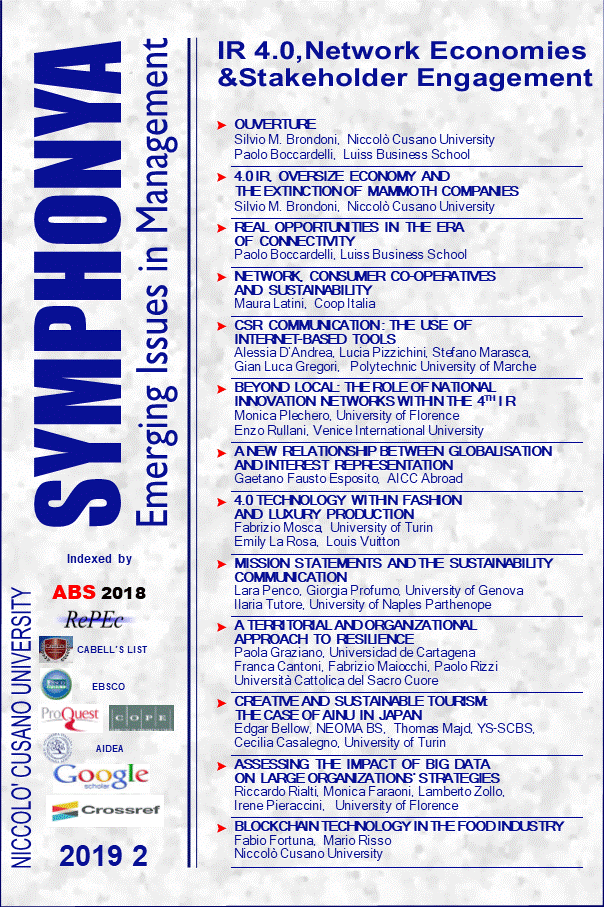Creative and Sustainable Tourism: The Case of Ainu in Japan
DOI:
https://doi.org/10.4468/2019.2.11bellow.majd.casalegnoKeywords:
Ainu-Japan, Joint Interests, Local Value Creation, Creative Tourism, Multi Stakeholders Initiatives, Power Imbalance.Abstract
Tourism is one of the world’s fastest growing business sectors and a key economic contributor around the world. In Japan, Hokkaido is a popular tourist destination for both domestic and international tourists because it provides a unique natural landscape, climate, and culture due to its geographic location and the presence of the Ainu. The Ainu population are an indigenous people of Japan and Russia. Despite the Ainu are one of the oldest examples and signs of tradition and heritage, one of the biggest challenges for them to play a key role in tourism is relating to the relationship’s imbalances with other members of the community. To this end, the aim of the paper is to explore the nature of relationships in the region, under the lens of stakeholder theory. We illustrate some possible avenues to restore the Ainu as protagonists of value creation processes in their own community, which might increase the benefit for tourists, sustainable performances of the area and the happiness and wellbeing of such vulnerable community.
Downloads
Published
How to Cite
Issue
Section
License
The authors retain all rights to the original work without any restrictions.
License for Published Contents

You are free to copy, distribute and transmit the work, and to adapt the work. You must attribute the work in the manner specified by the author or licensor (but not in any way that suggests that they endorse you or your use of the work).
License for Metadata

Symphonya published articles metadata are dedicated to the public domain by waiving all publisher's rights to the work worldwide under copyright law, including all related and neighboring rights, to the extent allowed by law.
You can copy, modify, distribute and perform the work, even for commercial purposes, all without asking permission.



